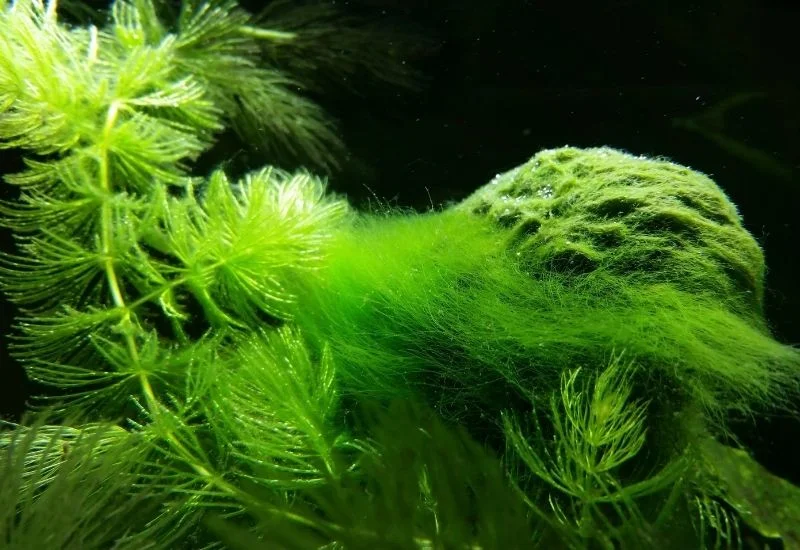Every aquarist faces algae problems once in a lifetime. Algae creates a mess in the water tank is unbearable. The most easy and preferable way is to get fish that clean the tank.
Did you know that before you could clean your aquarium automatically by stocking your tank with the algae eaters or cleaner fish? Here are the different fish types that clean water tanks by eating algae and waste.
So, let us learn about the most common fish that clean tanks and you should own them now for the cleaning of your water tank.
What Are Clean-Up Crew Fish?
You must have read or heard the phrase clean up crew. Clean-up crew (CUC) fish term refers to a type of fish that clean tanks by eating algae and other impurities such as wasted food.
Even some types of CUC fish search for food between gravels and plants, cleaning each piece in the tank. So, these are the helpers of their tank mates, making their environment cleaner and peaceful.
Common Types Of Algae Growth In Water Tank
When the watercolor starts changing in your tank, or the color slimy or furry pieces start growing, these pieces are called algae.
There are different types of algae. Green algae, red algae, devour algae, and so on. Blue-green algae is due to poor water conditions. Brown algae is caused by inadequate lighting in the tank. Whereas, green algae means there is excessive lighting in your water tank, or too much dissolved or uneaten food is causing green algae to grow.
Different types of algae in the water tank
- Green Surface Algae
It grows on glass and ornaments.
- Brown Diatom Algae
It occurs in new fish tanks. It can finish itself as time passes.
- Green Filamentous Algae
It is known as thread, tuff, brush, beard, or hair algae. Its name is due to its appearance as hair.
- Red/Black Algae
Red or black algae quickly takes over the slow-growing plants in the water tank. It later becomes a purple-like color.
- Blue-Green Algae
It is typically not an algae. It is cyanobacteria that is not eaten by fish. So, remove it manually.
Clean-up crew fish are great algae eaters. They eat algae and clean the water tank. But when excessive algae is present, it is necessary to take feasible precautions.
16 Fish that Clean Tanks
Here are the 16 fish types that clean tanks and eat algae. However, knowing about their names will not benefit you. You also must know about a particular species, its tank mates, size, and care level.
With it, it is also important to learn about the requirements of the water tank so CUC fish will survive.
Along with it, the water temperature is also a major to know about at which particular fish will survive and breed. But do not worry. This comprehensive list contains all the required information about fish that clean tanks.
Here are the major areas you must know about cleaner fish so you get the perfect one for your aquarium.
- Scientific name
- Temperament
- Origin
- Size
- Benefits for your tank
- Minimum tank size
- Care Level
- Preferred water temperature range
Corydoras Catfish
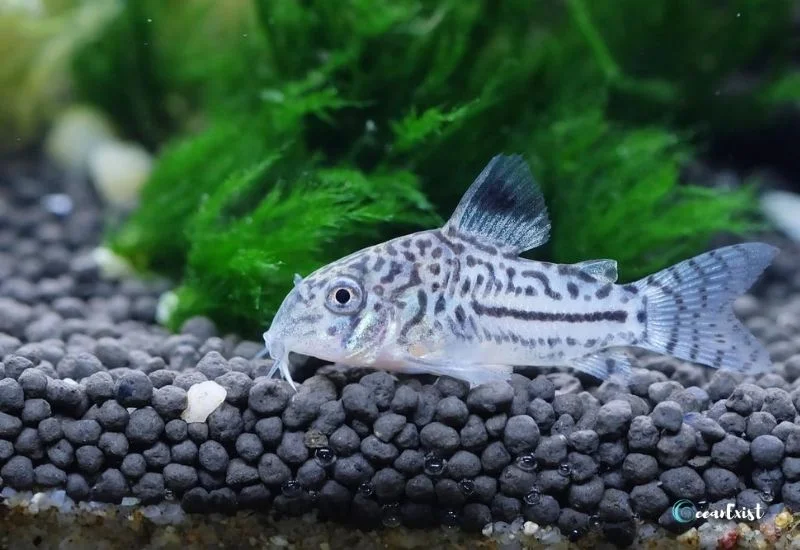
Corydoras catfish are peaceful and friendly fish that can live in normal environments. Catfish are best to put together with a wide range of tank mates. They clean the water like professional cleaners. These fish search for waste of uneaten food between gravel and plants.
| Scientific name | Corydoras spp. |
| Temperament | Peaceful |
| Care Level | Easy |
| Origin | South America |
| Size | 2-3 inches |
| Benefits for your tank | Eats leftover food and cleans the substrate |
| Minimum tank size | 20 gallons |
| Preferred water temperature range | 74 – 80 °F |
Loach
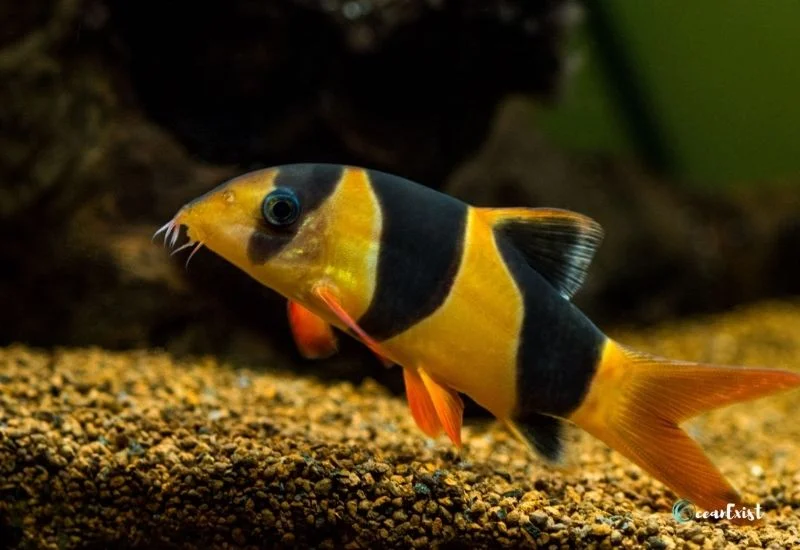
Loach fish dwell in the bottom. It cleans uneaten food in the bottom. They are best to control pest snails. They sleep during the daytime and show active behavior at night. Small loach requires 20 gallons. But the big loach needs a 50-gallon water tank.
| Scientific name | Pangio, Misgurnus, etc. |
| Temperament | Peaceful to semi-aggressive |
| Care Level | Easy to moderate |
| Origin | Asia |
| Size | 2 -12 inches |
| Benefits for your tank | Eats leftover food, cleans substrate, and controls pest snail populations |
| Minimum tank size | Species dependent |
| Preferred water temperature range | Species dependent |
Bristlenose Pleco
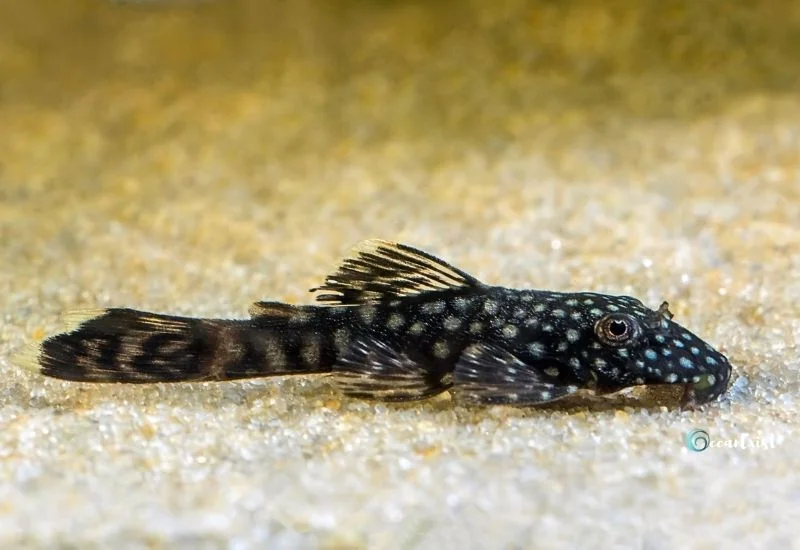
Bristlenose pleco is one of the best algae eater fish. It dwells in the bottom where it eats algae and diatoms. These fish are friendly and super cool in appearance.
| Scientific name | Ancistrus sp. |
| Temperament | Peaceful |
| Care Level | Easy |
| Origin | South America |
| Size | 5 inches |
| Benefits for your tank | Algae removal from hardscape and glass and substrate cleaning |
| Minimum tank size | 30 gallons |
| Preferred water temperature range | 72 – 82 °F |
Flagfish
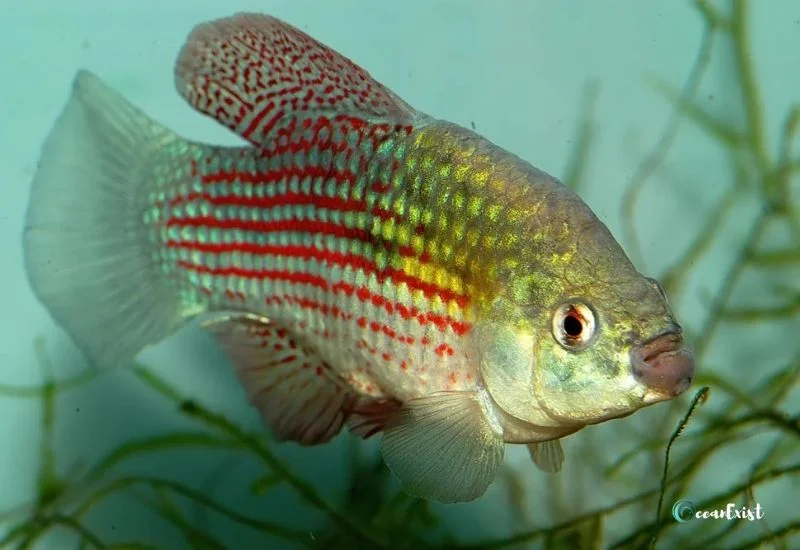
Flagfish are champions when it comes to eating algae. They eat brown algae, green algae, brown algae, and even purple algae. No one does algae-eating jobs better than flagfish.
| Scientific name | Jordanella floridae |
| Temperament | Semi-aggressive |
| Care Level | Easy |
| Origin | Florida, USA |
| Size | 2.5 inches |
| Benefits for your tank | Controlling algae growth |
| Minimum tank size | 10 gallons |
| Preferred water temperature range | 66 – 72 °F |
Geophagus & Satanperca Cichlids
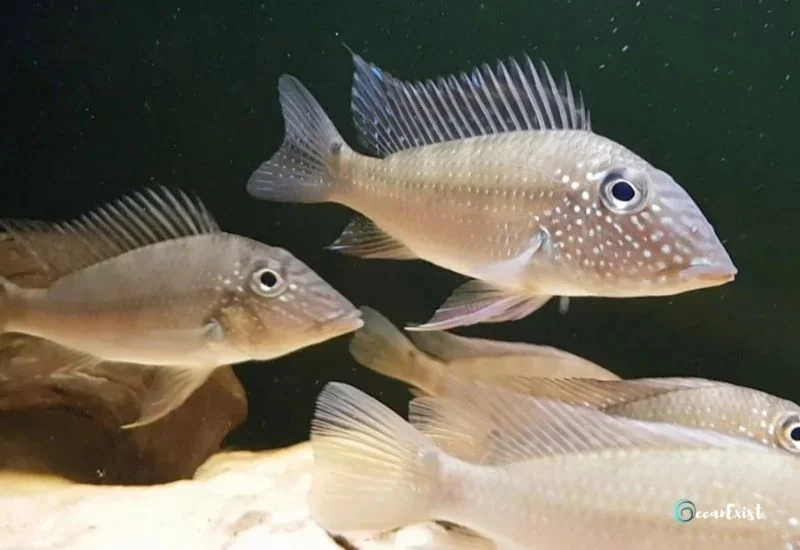
Geophagus & Satanperca Cichlids are known as the eartheaters. They fill their mouths with sand at the bottom. After that, they filter food particles. The rest of the sand is rested back out through the gills. These fish live in big tanks. They show peacefully aggressive behavior depending on their size and age.
| Scientific name | Geophagus spp., Satanperca spp. Etc. |
| Temperament | Peaceful to aggressive |
| Care Level | Easy to Advanced |
| Origin | South America |
| Size | 4 – 12 inches |
| Benefits for your tank | Substrate cleaning |
| Minimum tank size | 50 -100 gallons (depending on species) |
| Preferred water temperature range | Species dependent |
Rainbow Shark
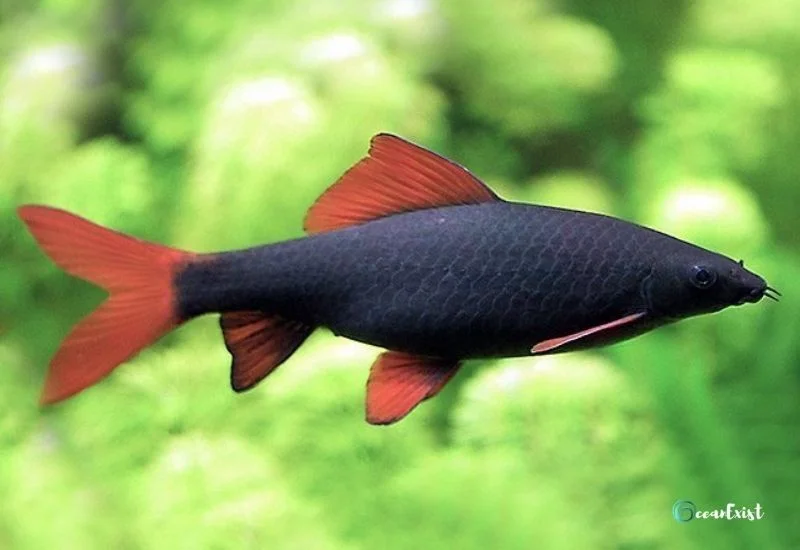
Rainbow Sharks have combo properties. They eat algae and uneaten food, and they are great at eating any type of algae. However, they are somehow aggressive and therefore given the name shark. So keep them with similar-sized fish. So they do not bully smaller fish.
| Scientific name | Epalzeorhynchos frenatus |
| Temperament | Semi-aggressive |
| Care Level | Moderate |
| Origin | Southeast Asia |
| Size | 6 inches |
| Benefits for your tank | Controlling algae and eating leftover fish food |
| Minimum tank size | 50 gallons |
| Preferred water temperature range | 70 – 79°F |
Molly
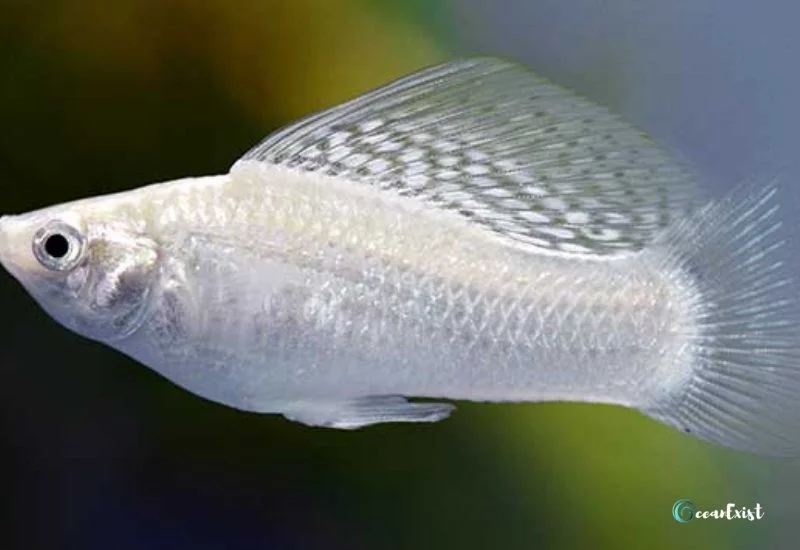
Mollyfish eat algae and uneaten food. They eat algae from any space, be it bottom, sides, leaves, or any. They are peaceful and easy to care for. They are smaller in size. Therefore, it requires only 30 gallons of tank.
| Scientific name | Poecilia latipinna/P. sphenops |
| Temperament | Peaceful |
| Care Level | Easy |
| Origin | South & North America |
| Size | 3 inches |
| Benefits for your tank | Great algae-eating fish |
| Minimum tank size | 30 gallons |
| Preferred water temperature range | 68 – 82°F |
Slim Bodied Goldfish
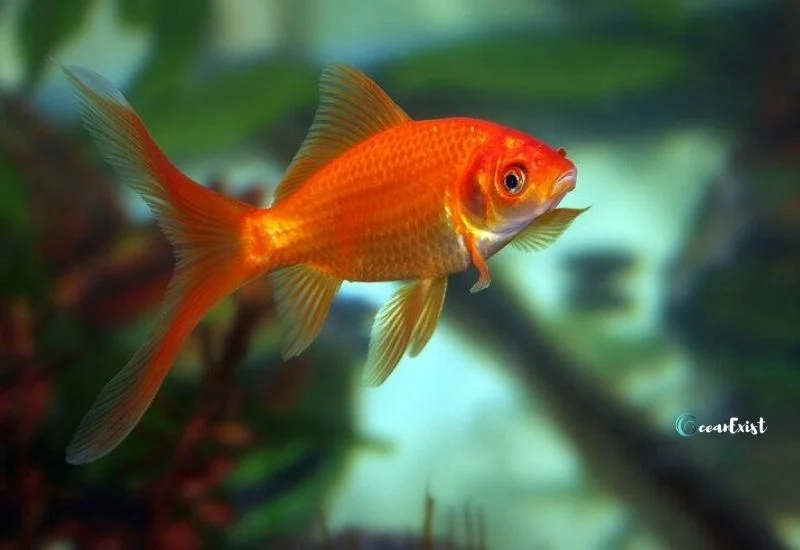
Slim-bodied goldfish are helpful algae eaters of lightly stocker freshwater. They clean the water tank from every spot. They do not feel better in small tanks if kept with other fish. The tank size for a single pair is 30 gallons.
| Scientific name | Carassius auratus |
| Temperament | Peaceful |
| Care Level | Easy |
| Origin | China |
| Size | 6 – 8 inches |
| Benefits for your tank | Helpful algae eater for lightly stocked cool-water aquariums |
| Minimum tank size | 30 gallons |
| Preferred water temperature range | 68 – 82°F |
Amano Shrimp

Amano is an excellent algae eater for a planted tank. They are champions of algae eating but only when the tank is full of plants. They clean plants like a polisher. They are easy to care for and have a peaceful temperament.
| Scientific name | Caridina japonica |
| Temperament | Peaceful |
| Care Level | Easy |
| Origin | Japan |
| Size | 2 inches |
| Benefits for your tank | Excellent algae eaters for a planted tank |
| Minimum tank size | 10 gallons |
| Preferred water temperature range | 60 – 80 °F |
Aquarium Snails
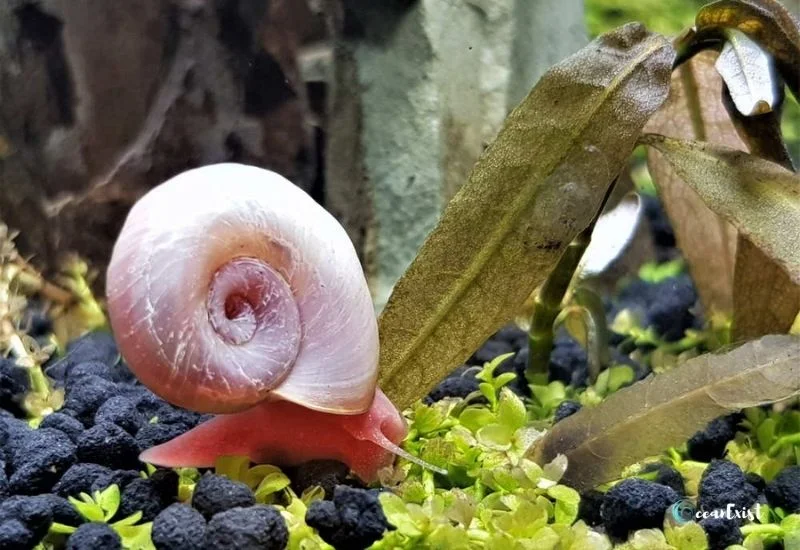
Aquarium snails or nerite snails eat every type of impurity from the water. They eat algae, fish waste, and also leftover food. They have smaller sizes and are found in every part.
| Scientific name | Various |
| Temperament | Peaceful |
| Care Level | Easy |
| Origin | Worldwide |
| Size | 0.5 – 2 inches |
| Benefits for your tank | Snails are excellent algae eaters and they eat fish waste and leftover fish food |
| Minimum tank size | 20 gallons |
| Preferred water temperature range | 68 – 82°F |
Plecos
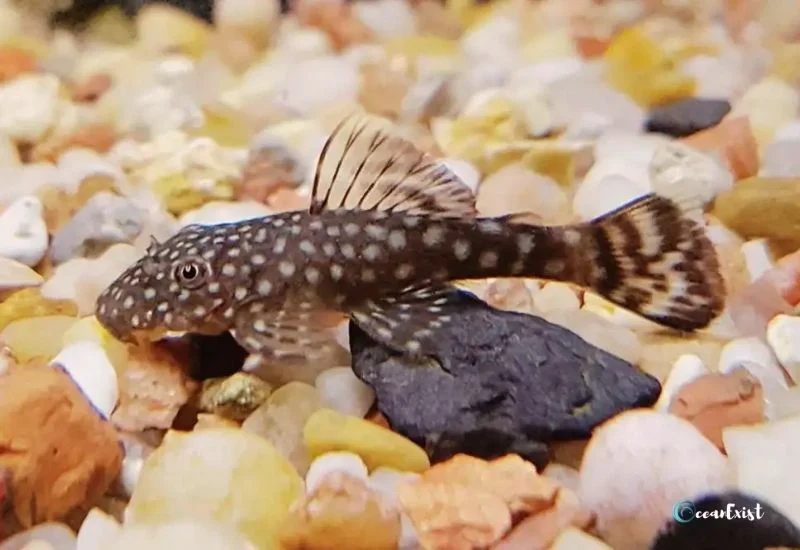
Plecos are the best or finest algae eaters. They eat green surface algae and brown or diatom algae from the plants and surface. Tank size depends on the type of pleco you are keeping. Their size ranges from 2 inches to 2 feet.
| Scientific name: | Plecostomus |
| Max size: | 2 inches and up to 2 feet depending on the type |
| Care: | Low |
| Feeding: | green surface algae, brown/diatom |
| Aquarium size: | small to large depending on the type of pleco |
| Compatibility: | Loners, one pleco per tank |
Otocinclus Pygmy Suckermouth
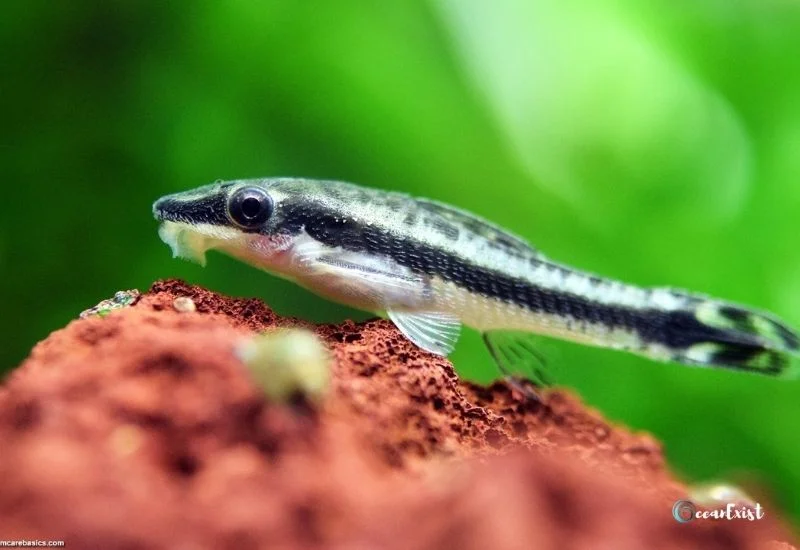
Otocinclus Pygmy Suckermouth are like plecos. They eat green algae and diatoms. The care is easy and can be put in any tank size.
| Scientific name: | Otocinclus |
| Max size: | 2 inches and up to 2 feet depending on the type |
| Care: | Low |
| Feeding: | green surface algae, brown/diatom |
| Aquarium size: | small to large depending on the type of pleco |
| Compatibility: | Loners, one pleco per tank |
Siamese Algae-Eater

Crossocheilus siamensis fish or Siamese Algae-eater eat red, black algae, tufted, brush, thread, or hair algae. They live in medium to large water tanks.
| Scientific name: | Crossocheilus siamensis |
| Max size: | 5 inches |
| Care: | Low |
| Feeding: | Red/Black Algae, Tufted, Hair/Brush Algae |
| Aquarium size: | Medium to large |
| Compatibility: | From 1 to 5 |
Twig Catfish
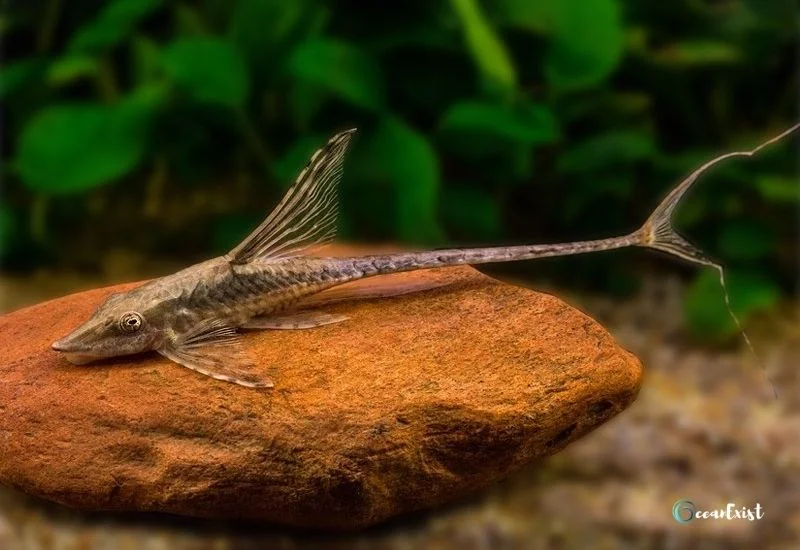
Twig fish eat green surfaces and brown algae known as diatoms. They live in large aquariums. These fish are friendly with all the fish except barbs and cichlids.
| Scientific name: | Farlowella |
| Max size: | 8 inches |
| Care: | Medium |
| Feeding: | green surface algae, brown/diatom |
| Aquarium size: | Large |
| Compatibility: | Most fish, except Cichlids and Barbs |
Whiptail Catfish
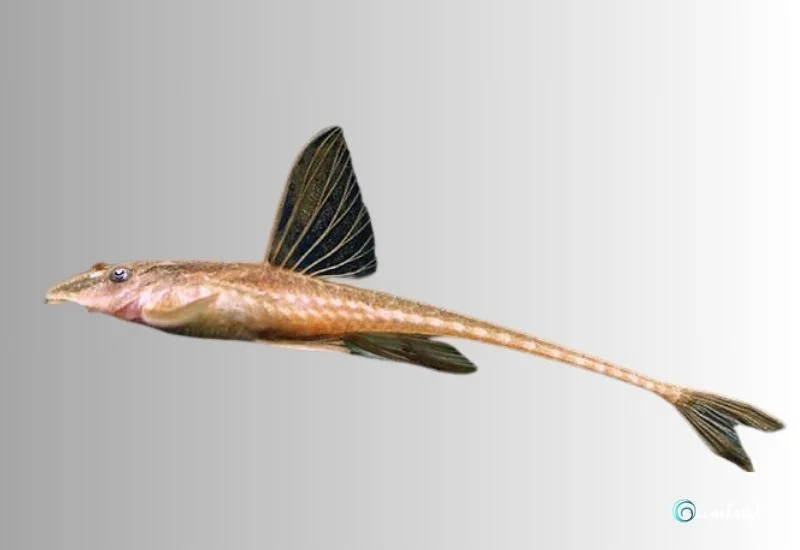
Whiptail Catfish, also known as Rineloricaria lanceolata, are omnivores. They eat algae and uneaten food. They are great water tank cleaners. These can be found in different water tanks of medium to large sizes.
| Scientific name: | Rineloricaria lanceolata |
| Max size: | 6 inches |
| Care: | Low to medium |
| Feeding: | Omnivorous |
| Aquarium size: | Medium to Large |
| Compatibility: | In schools of three or more |
Stone-Lapping Fish

Stone-Lapping Fish, scientific name Garra cambodgiensis, eats brush or hair algae. It can be put in small to large water tanks.
| Scientific name: | Garra cambodgiensis |
| Max size: | 2.5 inches |
| Care: | Low |
| Feeding: | Brush or beard algae, omnivore |
| Aquarium size: | Small to Large |
| Compatibility: | In schools of three or more |
Conclusion
Now you know all about how you can keep your water tank clean easily by putting in the aforementioned fish. Most of the fish require low care and can be put in medium aquariums.
By going through this comprehensive guide, get your water cleaner that suits your environment and tank mates easily. If you liked this one, hopefully, our next blog on types of goldfish will also be your choice to read.
